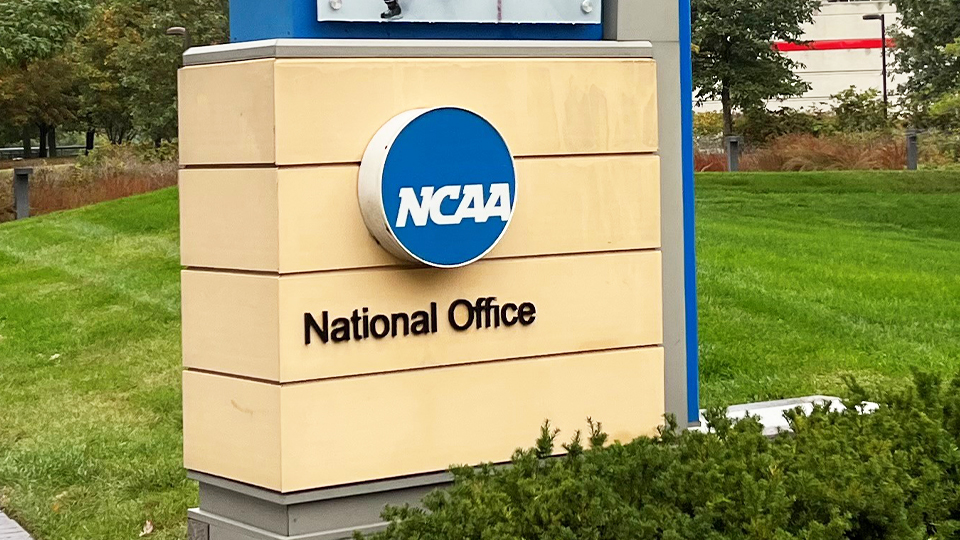Proposed $2.77B settlement clears second step of NCAA approval
Subscriber Benefit
As a subscriber you can listen to articles at work, in the car, or while you work out. Subscribe Now
A potential multibillion-dollar settlement of an antitrust lawsuit cleared the second of a three-step NCAA approval process Tuesday, and the presidential boards of two of the five conferences named in the complaint voted to approve the deal.
The NCAA Division I Board of Directors voted to move forward on a proposed $2.77 billion settlement of House vs. NCAA, according to two people who had been briefed on the vote. They said the vote was not unanimous, but it was unclear exactly how the 24 member-board voted.
The people spoke to The Associated Press on condition of anonymity because the NCAA was not revealing its internal discussions related to the settlement. The NCAA Board of Governors still must sign off on the deal for final approval. It is scheduled to meet later this week.
The D-I board’s finance committee recommended on Monday to stick with the original finance plan for the settlement, which has drawn the ire of non-power conference leaders who believe their leagues will bear a disproportionate financial burden.
The NCAA, Big Ten, Big 12, Atlantic Coast Conference, Pac-12 and Southeastern Conference are defendants in the House case, a class-action lawsuit that seeks back pay for college athletes who were denied name, image and likeness compensation dating to 2016. The NCAA lifted its ban on athletes earning money for sponsorship and endorsement deals in 2021.
The Big 12 on Tuesday became the first conference to approve the settlement, with its board of university presidents and chancellors voting unanimously in favor, another person with direct knowledge of the decision told the AP. The person spoke on condition of anonymity because the conferences were not making any public statements about the settlement for now.
Later Tuesday, the ACC presidents also voted to approve the settlement, according to a person with knowledge of their vote who spoke on condition of anonymity.
The Big Ten, SEC and Pac-12 presidents were scheduled to vote on whether to approve the settlement deal later this week.
Moving forward, it will be the Big Ten, Big 12, ACC and SEC making the largest investment as the settlement includes a proposed revenue-sharing system that asks their schools to commit upward of $20 million per year to be paid directly to athletes. The overall commitment is expected to be about $300 million per school over 10 years.
The NCAA office is set to cover nearly $2.8 billion in damages over 10 years. A reduction of operating expenses, insurance and reserve funds is expected to cover about $1.2 billion. The rest would come from withheld distributions to 352 Division I member schools. The NCAA distributes more than $700 million per year to its 1,100 member schools in three divisions, the vast majority to Division I.
The approved finance plan for the settlement calls for the NCAA to cover 41% of the $2.77 billion in damages, with the Power Five conferences accounting for 24% and the other five major college football conferences — the so-called Group of Five — covering 10%.
The conferences that compete in the second tier of Division I football, the Championship Subdivision, would cover 14% of the overall settlement and the non-football D-I conferences would be on the hook for 12%.
The conference commissioners from leagues that do not compete at the highest tier of Division I football, the Bowl Subdivision, have taken issue with the $1.6 billion in withheld distributions portion of the settlement.
The 27 conferences not named in the lawsuit are expected to cover 60% of withheld distributions, with the other 40% coming from power conferences that currently comprise 69 schools.
The commissioners of the 22 non-FBS conferences sent a memo to NCAA leadership, proposing the finance structure be flipped so power conference withheld distributions cover 60% of the $1.6 billion.
Big Sky Commissioner Tom Wistrcill said earlier Tuesday the non-FBS conferences were holding out hope for reconsideration.
“We’re fighting uphill,” he said.
The Big Sky is one of the most successful conferences in the Championship Subdivision, with schools such as Montana, Montana State, Eastern Washington, Idaho State and Weber State.
“We believe over 95% of the damages are going to go to (Power Five) football and basketball players. For non-A5 conferences to pay for that is disproportionate. We’re asking for a more proportionate structure because our student-athletes are not going to see the money,” Wistrcill said.
Plaintiffs’ lawyers have given the NCAA and conferences until Thursday to respond to the settlement proposal, with parties on both sides sounding hopeful that it will be approved.
The conferences not named in the lawsuit did not find out about details of the proposed settlement until two weeks ago through media reports, Wistrcill said. He said they are hoping the settlement can be approved with an opportunity for the NCAA financing plan to be readdressed, but the prospects of that diminished even further with the full board’s approval Tuesday night.
Wistrcill said the formula for withheld distributions the NCAA is using, which is based on the percentage a conference received of overall NCAA distributions between 2016-2024, is projected to cost the Big Sky around $3 million per year over 10 years.
He said while power conferences will have a larger total distribution withheld on a per school basis, that revenue is a much smaller part of athletic department budgets that typically soar past $100 million annually. It also does not take into account the huge influx of revenue those schools are about to receive from the expanded College Football Playoff.
Big Sky school athletic budgets run about $20 million annually.
“The money is flowing to their student-athletes while disproportionately (the settlement) is penalizing our institutions,” Wistrcill said.
